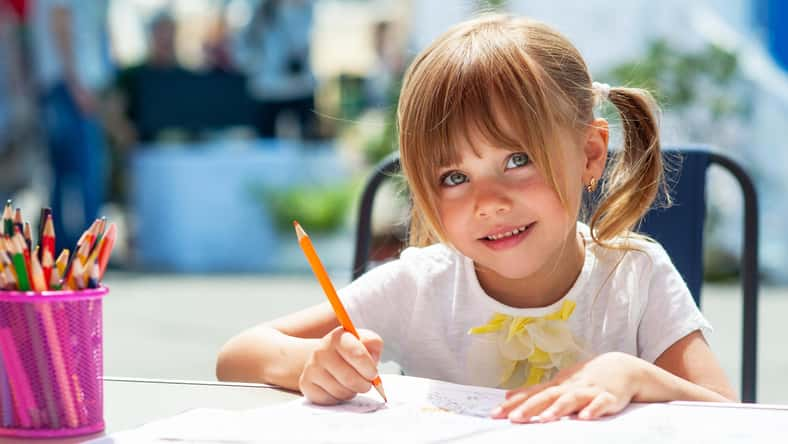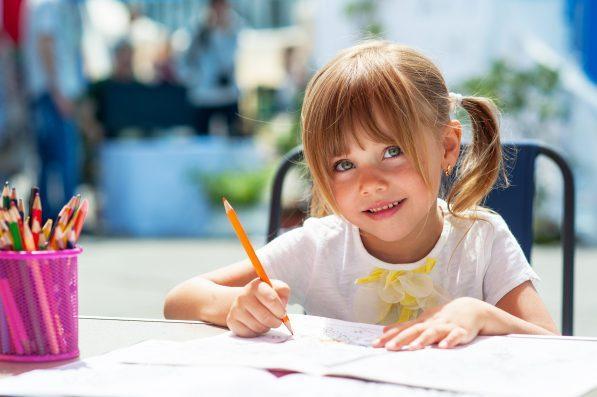Stimulate And Educate With These Sensory Play Activity Ideas For Toddlers And Preschoolers

Sensory play might sound like an educational buzzword, but it’s a simple concept that’s been around for ages.
At its core, sensory play is any activity that stimulates one or more of a child’s five senses: sight, smell, touch, taste, and hearing. It goes beyond merely handing your child a toy; it’s about immersing them in an experience that engages multiple senses.
So, if you’ve ever wondered why kids can’t get enough of sandbox digging, finger painting, or dough squeezing, it’s because these activities provide rich sensory experiences.
Sensory play contributes to cognitive growth, language development, motor skills, and social interaction. It even aids in the development of nerve connections in the brain.
So, the next time your little one gets messy exploring different textures, remember they’re doing more than just having fun; they’re learning.
Types Of Sensory Play
Up first is tactile play. When it comes to kids, think of squishing, squeezing, and sorting. Activities like playing with sand, water, or playdough all fall under this category. Tactile play helps in fine motor development and gives kids an understanding of different textures.
Then, olfactory and gustatory play involve smelling in tasting. Cooking simple recipes, smelling different spices, or even tasting various fruits can be exciting for your tiny tot. It’s an excellent way for them to categorize and remember different smells and tastes.
Listening (or auditory play) is also an essential part of sensory play. From the sound of rain to musical instruments, auditory experiences can be both calming and educational.

Rakursstudio – stock.adobe.com- illustrative purposes only, not the actual child
Finally, visual play involves puzzles, light tables, or even a good old game of peek-a-boo to help stimulate your child’s visual senses. These activities teach children about colors, shapes, and spatial awareness.
Sensory Play For Toddlers (1-2 Years)
Water play is often a favorite among little ones, and it provides great stimulation. All you have to do is fill a shallow tub with water and throw in some floating toys, cups, and spoons.
Then, you can switch back and relax as your toddler enjoys splashing and discovering the physics of water. Fair warning, though: you may want to make this an outdoor activity.
Another fun way to engage your toddler in sensory play is by making paint that is safe to eat.
You can accomplish this by simply combining some yogurt and food coloring and allowing your tiny tot to go to town finger painting. It also won’t be a big deal if they get a taste of the materials in the process.
For Preschoolers (3-4 Years)
Creating DIY sensory bins filled with rice, beans, or pasta has been all the rage– and for good reason. Afterward, all you have to add are some small toys, blocks, or other shapes for them to find.
This activity is like a treasure hunt and a sensory experience rolled into one.
You could also build a “sound map” with your preschooler by going for a walk around your neighborhood and making notes of the different sounds you both hear. For instance, birds chirping, cars driving by, or leaves rustling.
Then, once you return home, you can draw a “sound map” with your preschooler to represent your adventure.
For Advanced Preschoolers (4-5 Years)
All kids love slime, and it’s extremely easy to make at home. Simply mix some glue, water, and food coloring. Then, add a little bit of borax to pull your slime together.
Not only is it gooey fun, but it also teaches basic chemistry.
Finally, you could even set up a sensory scavenger hunt in your home or yard, encouraging your child to find items that are soft, rough, heavy, light, and more.
This is a fun way to encourage exploration and help your child begin to categorize the world around them.
If true crime defines your free time, this is for you: join Chip Chick’s True Crime Tribe
How To Decorate Your Home In The Art Deco Style
Sign up for Chip Chick’s newsletter and get stories like this delivered to your inbox.
More About:Parenting